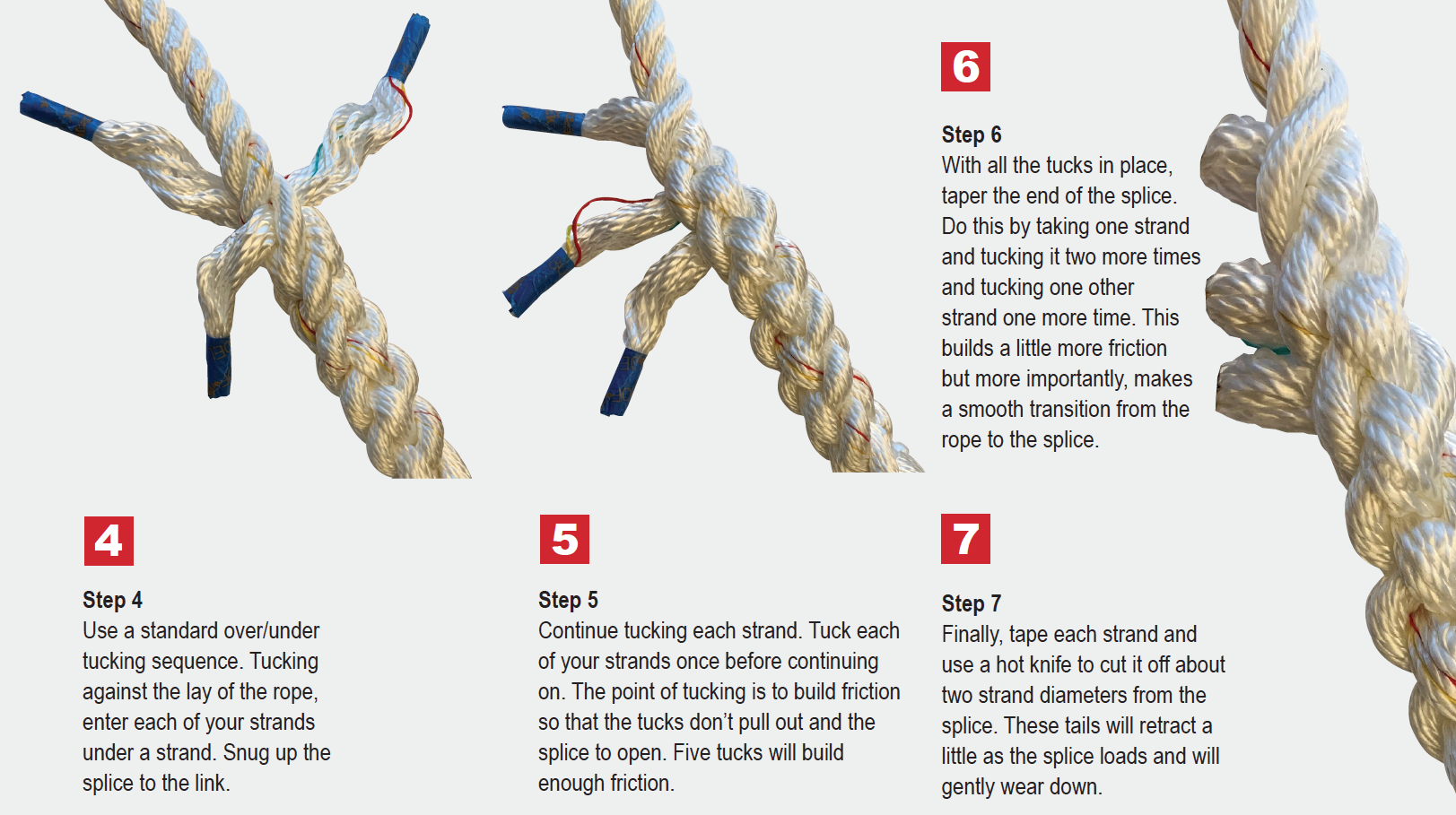Splicing three-strand line to chain
A smooth transition from rope anchor rode to chain is a necessity, and in need of frequent inspection

“People think that you splice the line to the anchor chain once and it’s good to go, but it’s really one of those things you have to check frequently,” said marine surveyor Richard Reichelsdorfer of Marine Pro Service, who frequently finds problems with the anchor chain splice when surveying boats. “When that breaks you lose your anchor and your chain, but the worse problem is that when you’re anchored you’re dependent on that splice and if it breaks, things can get ugly very quickly.”
Choosing anchor rode material and size is also a compromise of factors. Chain is used in an anchor rode for a variety of reasons. Chain is very chafe resistant and its weight helps keep a catenary in the rode. The catenary—the arc in the rode—allows the rode itself to absorb anchoring energy and not transmit all the load to the anchor.
Weight is your friend when the anchor is deployed, but it is not helpful piled up in your anchor locker. Because of this, many owners choose smaller, but stronger chain. For example, 5/16-inch G4 chain is half the weight and stronger than 3/8-inch BBB chain. But smaller chain has smaller links, making it that much more difficult to fit the strands of the anchor line through the link.

Comments